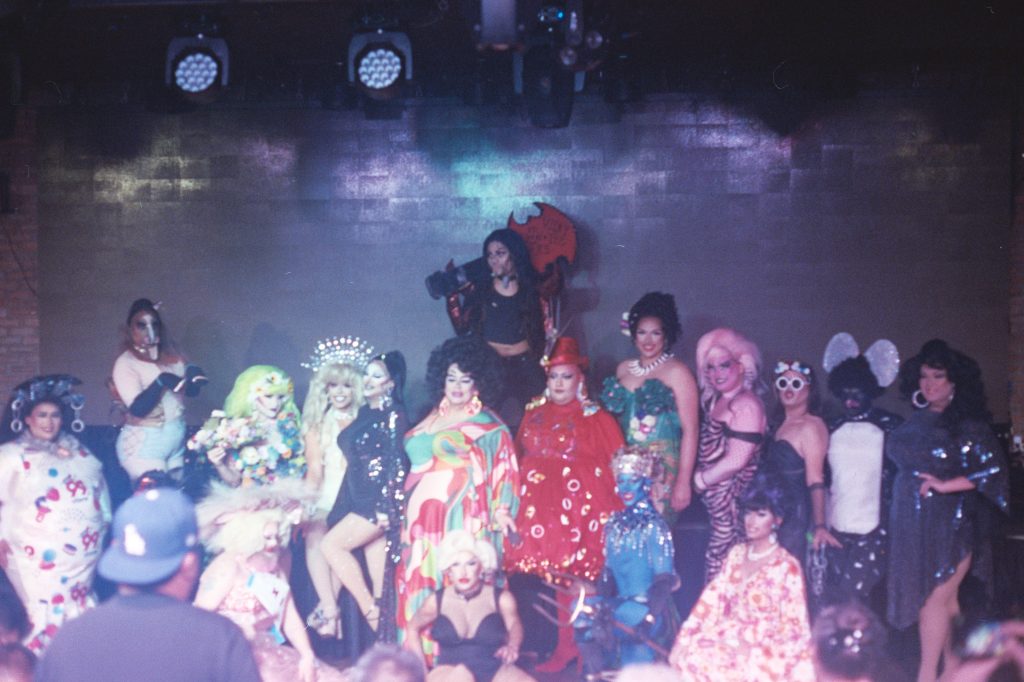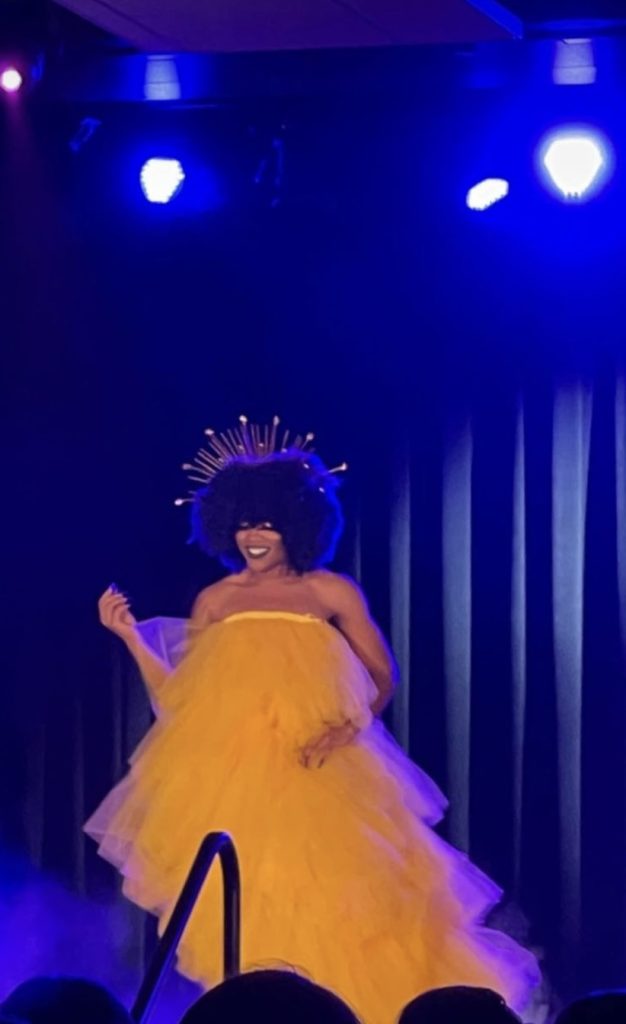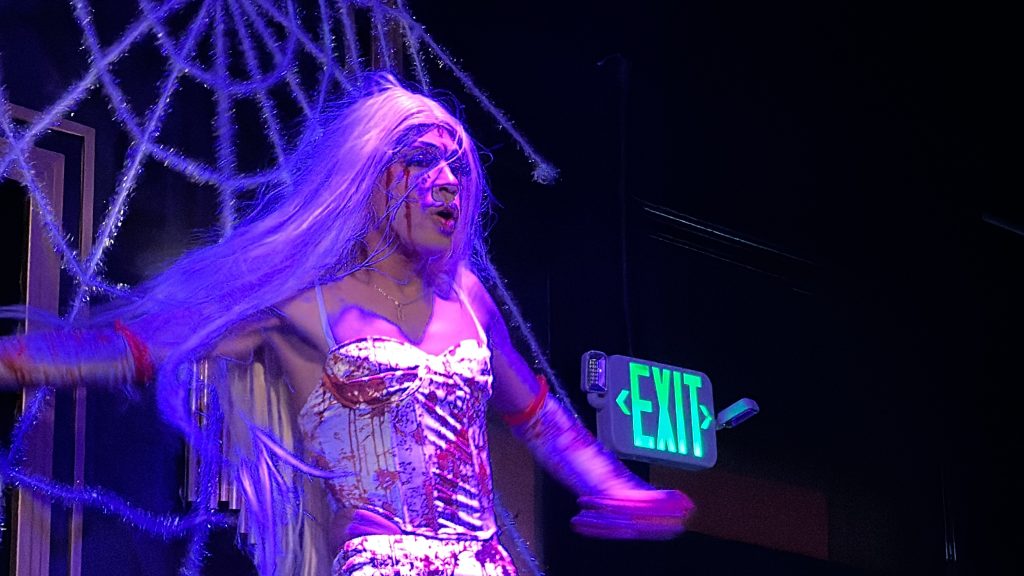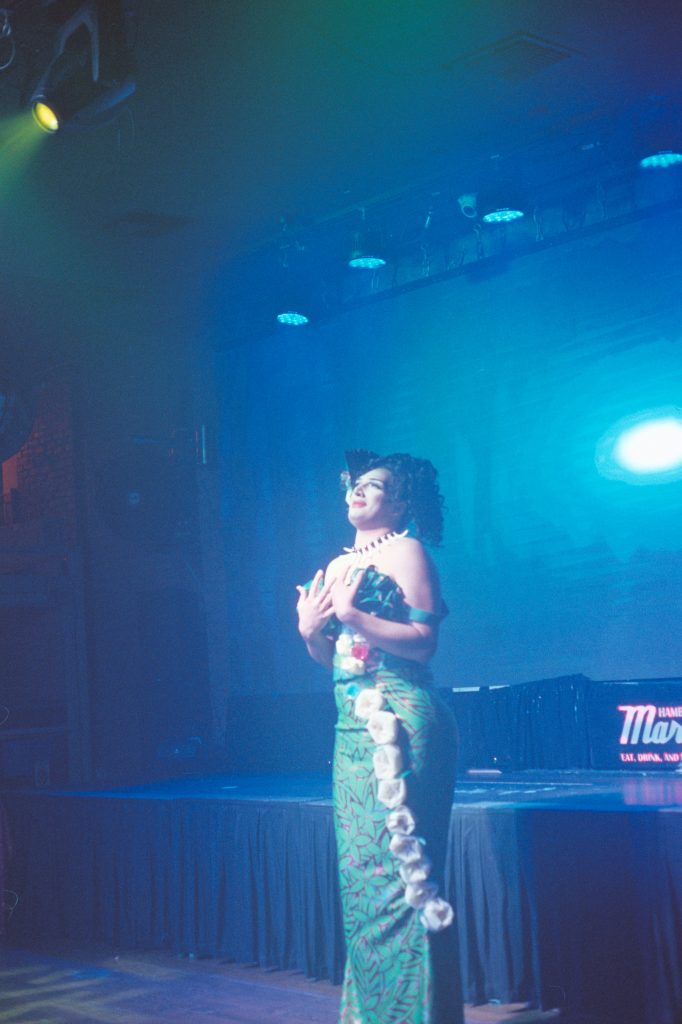Drag Drag Drag
Jour 414 Capstone

Breaking Barriers: Exploring the Art of Performance and Identity
By: Mauricio Murillo
RuPaul and Drag
“Drag means empowerment. Every time I put my makeup on or walk out the house looking like how I do, I just feel so empowered, because…. I want to share my art with people and get it out there.” These words were spoken by a young vibrant drag queen from San Diego, Amore Envy, who has been navigating the World of drag from her bedroom to nightclubs around Southern California. She encapsulates the essence of an art form that reaches far beyond the boundaries of entertainment. For many, drag is more than a form of entertainment, it is a form of artistic expression, an extension of self-expression.
Drag with its roots intertwined in the performance of gender and creativity, has surged into the spotlight through platforms like RuPaul’s Drag Race, highlighting the power of representation in the media.
In recent years, this reality TV show has not only captivated audiences all over the World but also pioneered a profound cultural shift for queer people all over. Beyond the fabulous wigs, the flamboyant outfits, captivating dance numbers, and heartfelt ballads, Drag Race has become a beacon of representation, shining a light on the LGBTQ+ community with increasingly diverse representation.
RuPaul’s Drag Race is a majorly popular reality TV competition with over fifteen seasons and various spin-off shows as well as numerous international franchises ranging from the UK to Thailand to Brazil to Italy to Chili to Germany and many more. The show is hosted by the legendary drag queen, RuPaul, and features groups of drag artists competing in various challenges to test their skill, charisma, nerve, talent, and uniqueness. Contestants must showcase their creativity, fashion sense, acting, lip-synching abilities, choreography, comedy, and stage presence to impress judges and eventually claim the title of “America’s Next Drag Superstar.” In recent years, the show has gained immense popularity for its trending contestants as well as its invested viewership and fanbase and this past season saw the highest ratings in 3 years.
The increasing presence of drag amongst the queer community has opened more diversity and inclusion in the artistry. Many up-and-coming drag queens today cite their first interactions with drag through RuPaul’s and slowly the scene has begun to extend beyond drag queens, including drag kings and nonbinary or trans drag performers. RuPaul even crowned their first ciswoman queen and first Lesbian queen.

Amore Envy
The point is this show has been a source of inspiration for many queens. Many young college aged performers can remember seeing clips or episodes of the show and starting their drag journey in the comfort of their own bedroom dawning the title of ‘bedroom queen’, Amore Envy explains, “I was a bedroom queen from 13 to 17… and that was mainly through make up artistry. I was doing boy makeup, and I was really inspired by the beauty gurus at the time. I was like “Oh I can do this.” It started with a makeup fascination.” She would further explain the role of social media in her journey. Emphasizing how posting her makeup looks helped her gain a sense of confidence and it introduced her to a vast array of networks from various queens both new and experienced. “I think social media plays a really big part in our industry because it’s how you connect with people. It’s how you get bookings. It’s how people are able to see your work and what you can do”
Although having done performance-based drag for over two years, Amore Envy still classifies herself as a relatively new queen. Her first show was in 2021 at a drag show at San Diego State University where “two Resident drag queens were running open casting calls on Instagram… I was like, “Okay well I’ve been doing this in my room for however long. I should try this in front of an actual audience” and try she did. She explained that taking place relatively after the height of the pandemic allowed for the audience to be the perfect size. Not too big but not too small either. She emphasizes the importance of having these spaces at the university level, “I think especially for queer kids and trans kids, it’s very important to have these spaces, so they can meet people they can connect to and form a bond with because I think we all like to be around people who understand our struggles and understand our wins and how the World operates for us.”
She further highlights how there is a large population of people getting involved with drag at younger ages. Envy credits RuPaul’s Drag Race for being a beacon of LGBTQ+ representation, “kids are now seeing themselves in this TV show… There’s a while community of people online who are underage and have started posting makeup looks.” She hopes to one day host a show for teenage queens and kinds who want to experiment with drag.

Caleb Flores
Traveling up North, to the heart of Los Angeles at the University of Southern California, Caleb Flores was able coordinate and prepare his first ever drag performance thanks to the annual Drag Show held by the Queer & Ally Student Assembly (QuASA).
Similarly, to Amore Envy, Caleb credits drag queens from RuPaul as his source of inspiration as well as other musically based pop girls like Beyonce, Nicki Minaj and Doja Cat. He was initially hesitant to participate but ended up committing, explaining that for him, this was more than entertainment, “I wanted to feel the fantasy. I love seeing the girls on Drag Race do all their things and I’ve developed such a deep passion for drag. It’s not just something I just enjoy ingesting. It’s a queer art form that’s rooted in people of color as well.”
Thanks to QuASA, USC was able to foster a space that gave Caleb and many others the environment and resources to be able to freely experiment with drag in a safe place that was full of support. “I feel like now’s a great time because college is a place for you to explore, for you to meet new people and get diversity and a breath of new experiences. It’s the perfect place to try new things and I’m glad to have done [drag] at this level.”
Having to meet for three hours on a weekly basis, practicing routines, learning makeup, practicing how-to walk-in heels, learning to make music mixes and how to come up with and commit to a concept, it was definitely a big commitment. But he was not alone. The biggest goal for Caleb was to see his concept through, “I wanted to be black. And I know that might seem like a given, but it’s really not, especially when you look at the careers of black drag queens specifically like RuPaul and Shangela… But drag queens like Shea Coulee, Bob the Drag Queen, Monet X Change they’re black women. So I wanted to be a black girl, I had my afro, I wanted hoops, I wanted the vibe that culturally signifies where I belong”
What drew him in was the fluidity of drag. Although he acknowledges the constraints drag has had in the mainstream, he highlights the importance of letting drag be what it is, fun expression. An unlimited form of expression. Additionally, for Caleb, the roots of drag add to its beauty. The roots of ballroom culture in drag and the prominence of black drag queens in early drag history make it so that it is imperative to remember the roots are black and brown no matter how whitewashed it may get. But despite the aforementioned constraints, drag has began to exceed beyond what it has been in recent years. He explains how the genders performed has drastically widened as people have begun to be more comfortable of gender as a spectrum as well as what drag can be whether it is singing or dancing, or comedy, or painting or reading books to children or hosting brunches and cocktail parties.

Raymiro Gomez Galiano
Another USC student, Raymiro Gomez Galiano was able to create his own drag journey apart from school organizations through his own means. A relatively newer queen, he was only recently introduced to drag through RuPaul and even then, it was something that he had been aware of but didn’t necessarily catch his eye until a couple months ago. Having just watched the newest season, he fell in love with the contestants, the stories, the characters and the art.
He began his journey go-go dancing, a style of dancing that involves energetic and provocative movements that are usually performed by dancers in clubs, bars, and other events. They typically dance on stages, platforms, or other elevated areas to entertain the audience from a distance, although not always a far distance. He explains “I love the club scene, it’s fun, it’s entertainment… I liked to give other people the illusion or the fantasy so to speak, to escape their own personal whatever is going on in their lives, to go to the club and have fun, let loose, no judgment, no shame.”
Eventually after go-go dancing for a while and being surrounded by drag queens, he decided to give it a try. He shaved his beard for the first time. Having his first drag performance at a relatively small venue in Downtown Los Angeles. “The girls are there for you, they’re supporting you, they’re helping you. Especially if you’re starting… They were there for me when I didn’t have much or if I needed something… it’s very open and trusting. And overall, it was beautiful.”
Raymiro has been able to not only perform in clubs and venues but has also been invited to perform at a USC student-run performance, being the first drag performance hosted on USC’s fraternity row. As drag continues to deviate to other spaces, it is important to recognize the people who are willing to put themselves out there.
He expresses the importance of creating spaces that eliminate shame and allow individuals to be exposed to different things. “When you perform… you’re constantly learning. But it’s in no way shameful, when you aren’t able to do the splits or a drop. Or if you can’t perform well, that’s not the essence of drag. Giving folks a good time… that is what drag is” He further emphasizes the importance in details, like facial expressions, what you do with your eyes and mouth. All this builds upon itself to create an experience for performers and audiences.

Beaudacious
“An audience can be amazing and uplift the performer. And a performer can do the ooposite and uplift the audience. I think we bounce off each other. This community is something queer people need. We don’t get a lot of help. So we need to have each other’s back.” Back in Long Beach, California, Beaudacious is another drag queen inspired in high school by RuPaul’s Drag Race. Technically new, just over a year of experience, she delved into drag with her character living in the late 90s and early 2000s. Nostalgia is a huge source of inspiration for her and in a lot of her numbers and looks, there is some y2k inspiration. Both in and out of drag she loves the aesthetics of that era.
When starting her drag journey, she did not really know anyone, and she does admit it felt lonely. She felt almost like an outcast, citing how in this business, connections was everything. Like it or not. And she had none.
Expecting tons of queens and kings her age, she was surprised by the number of older performers, “there’s a lot of people, tons of people who’ve been doing this for years. I met a lot of them. When I first started, I was mostly just assuming everyone was my age and then finding out they weren’t.” and yet despite the age difference at times, she explains that asking for help from the community was a game changer. It helped her find out about new places to book, trying to further launch her career.
Nonetheless the scene is still heavily dominated by younger people, there was an acknowledgment that things have gotten more inclusive. The community itself has become more accepting to all kinds of drag, rather than solely emphasizing pageant drag. Beaudacious herself was even able to coordinate and perform a Polynesian inspired look and presentation in honor of her heritage and it was well-received.
After creating several mixes, creating her own outfits, doing her makeup, sometimes spending more money on a look than what is going to be earned in profit, enduring stress and anxiety, she wouldn’t trade it for anything. Drag allows her to perform her own fantasies and live out on the stage.
Social media yet again, was utilized as a means to foster connections and share art. But more importantly, promote. “We’re constantly promoting shows, constantly promoting to get people there… that’s a huge part of social media, promoting and getting our names, faces and performances out there for people to see so they will come watch us more often.” She continues explaining the importance of establishing your character or ‘dragsona’.

Drag and Community
The common threads between these queens are evidence that this community has been around for a long time, and it’s not going anywhere anytime soon. As more people are exposed to drag and drag continues to percolate in the mainstream, it allows for individuals both younger and older to freely experiment with the art of drag and performance of gender. The biggest change isn’t just the demographics, but the amount of diversity and inclusion efforts recent performers have pushed for both in and out of their work.
Drag isn’t always a set career. It can be. A lot is set up for it to be possible to rely on it as a steady flow of income. Social media allows drag queens to monetize their drag personas and gain a following. It is a place for bookings, networking, promoting, and posting performances and looks. It can also be a source of inspiration. But it can also be for fun. Their drag can be a hobby on the side. The fluidity of drag and what it can be allows for people from all backgrounds and with different intentions to partake in the art.
Drag is an important part of queer culture, and it is expanding to more open spaces. University campuses all over have opportunities for young people to get involved with drag to some level. As social media creates safe spaces for young queens to experiment in the comfort of their bedroom, campuses have fostered places for queens to prepare and perform in front of audiences.
The spread of this artform is important, not only for the community, in the sense that drag shows provide a safe space for all those who are present, allowing audiences to resonate with performers and allowing performers to become spectacles on the stage, allowed to express themselves fully and freely in their most authentic way.
Amore Envy explains the importance of being surrounded by peers who understand your struggles, especially when you’re different. Community is everything to drag performers and accounts for the longevity the community has endured in queer culture.